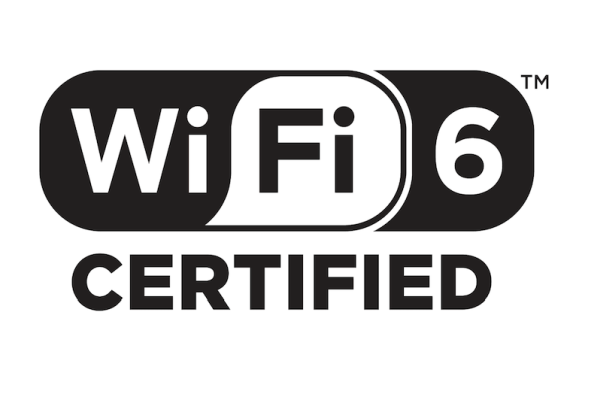Published on the 25/09/2019 | Written by Heather Wright

And no you didn’t miss 1-5, it’s just 802.11 was feeling uncool…
It’s promising faster speeds, latency improvements and – in what could be a key selling point for businesses – more reliable performance on congested networks, but if you missed the drop last week of the latest iteration of WiFi, you’re not alone.
While 5G has hogged the headlines, despite not being available yet and requiring widespread deployment by telcos to be of real benefit, WiFi 6 touched down, with the WiFi Alliance unveiling its certification programme for device manufacturers, with little fanfare.
(For anyone who prefers the old naming conventions, WiFi 6 is actually IEEE 802.11ax and no, you didn’t miss WiFi 1 to 5 – the old naming conventions have just been dumped to become more user friendly.)
So what’s WiFi 6 actually offering, or at least potentially offering?
Phil Solis, IDC research director, says WiFi 6 brings greater speeds and more efficiency to WiFi networks, expanding its role as a critical communication platform.
“It’s coming soon, and it’s built for IoT.”
The key improvements are in speed, connection strength, the offering of simultaneous streams and a wider spectrum of channels to use. The upshot: More reliable performance and connection stability on demanding networks, with more devices able to be simultaneously supported on each connection point and the network able to handle different data streams at the same time.
Edgar Figueroa, president and CEO of the WiFi Alliance, dubs the new offering ‘a new era of WiFi’ saying it builds on WiFi’s core characteristics to provide better performance in every environment, greater network capacity for service providers to improve coverage for customers and new opportunities for advanced applications.
“WiFi certified 6 will deliver improvements in connectivity, including in high density locations and IoT environments,” Figueroa says.
Like 5G, WiFi 6 is being hailed for its potential for IoT environments, thanks to its ability to enable access points to communicate more effectively with multiple devices simultaneously and its more efficient power usage.
Tom Soderstrom, IT chief technology and innovation officer for NASA’s Jet Propulsion Laboratory, dubs WiFi 6 a ‘breakthrough’ technology.
“It’s coming soon, and it’s built for IoT. It will connect many, many more people to mobile devices, household appliances or public utilities such as the power grid and traffic lights,” Soderstrom said in a Meritalk post.
“The transfer rates with WiFi 6 are expected to improve anywhere from four time to 10 times current speeds, with a lower power draw. The benefits may not be as explosive as 5G, but its impact will be consequential.”
About that speed
The headline feature is its increased transfer speeds, with the next generation wireless connectivity supporting theoretical maximum speeds of up to 10Gbps. In reality, industry experts are expecting an increase of around 30 percent on speeds seen with 802.11ac, or what we now know as WiFi 5. CNET says its testing clocked WiFI 6 transfer speeds at 1,320 Mbps, about 40 percent faster than the fastest WiFi 5 speed CNET had ever measured – and 1000 percent faster than the average download speed in the US of 119Mbps. New Zealand’s average fixed broadband speed was measured at 101.31Mbps by the Speedtest Global Index, with Australia sitting at a sorry 41.31Mbps in the monthly rankings.
That, of course, brings us to the issue of your ISP speeds. While the 1,320Mbps might be achievable between the access point and a client device, it’s another story when it comes to achieving those speeds on the internet, with the size of your internet pipe a limiting factor.
In New Zealand most standard consumer fibre broadband plans range from 30Mbps to 200Mbps for downloads though gigabit plans are available. Many standard business plans topping out around 900Mbps, though again, gigabit plans are available. In Australia, NBN Co announced pricing changes for its plans last week and the addition of a new plan offering 1 gigabit per second download speeds.
WiFi 6 simultaneously uses both the 2.4GHz and 5GHz bands traditionally used by WiFi to provide a speed increase. It also adds support for ISM bands between 1GHz and 7GHz, adding more spectrum and moving data away from the already crowded 2.4GHz and 5GHz bands.
Latency, meanwhile, is tipped to see a 75 percent reduction.
A number of routers and chipsets from vendors including Ruckus (which has just been acquired by CommScope), Intel, Broadcom and Qualcomm have already been certified, while both the iPhone 11 and Samsung Galaxy S10 are also supporting the new standard and laptops expected to follow soon thanks to Intel’s 10th generation Ice Lake and Comet Lake processors.
So next time you’re on the device market, keep an eye out for the WiFi6 certified logo.



























